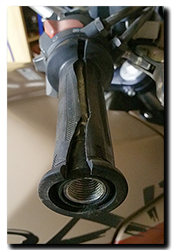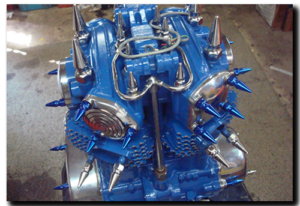 I really like fasteners, I hate rusty, corroded or damaged fasteners. There it is out in the open, plain and simple. I think there’s something tragic about lots of hard work going into an assembly, only for those old jaded screws/nuts/bolts/washers to go back into holding it together. On the other hand I’m not a fan of those OTT ‘custom fasteners’ – pike nuts etc or gaudy anodised fasters in any colour of the rainbow. For me, they are way overkill. What I want is an upgrade from the manufacturers items that were no doubt chosen with cost in mind. I like something that looks a little more up-market, in a material that is mechanically safe for the task in hand – safety has to override looks every time! They are there to do a job and complement the work that went into the parts they represent.
I really like fasteners, I hate rusty, corroded or damaged fasteners. There it is out in the open, plain and simple. I think there’s something tragic about lots of hard work going into an assembly, only for those old jaded screws/nuts/bolts/washers to go back into holding it together. On the other hand I’m not a fan of those OTT ‘custom fasteners’ – pike nuts etc or gaudy anodised fasters in any colour of the rainbow. For me, they are way overkill. What I want is an upgrade from the manufacturers items that were no doubt chosen with cost in mind. I like something that looks a little more up-market, in a material that is mechanically safe for the task in hand – safety has to override looks every time! They are there to do a job and complement the work that went into the parts they represent.
What am I upgrading then?
So as part of the brake line upgrade, I’ve swapped out the stainless steel cap heads I had holding the hose supports to the fork leg with lovely Racebolt flanged hex head ones that better reflect the items originally fitted by Aprilia. A waste of money? Quite likely. Hell the cap head bolts did the job and were also in stainless steel, but they always looked like an obvious swap – a generic item – these new bolts look like Aprilia MIGHT have fitted them if build cost wasn’t so high on the list. In the end, these things are personal and one owners pike nut is another owner duct tape … they both hold things together I guess!
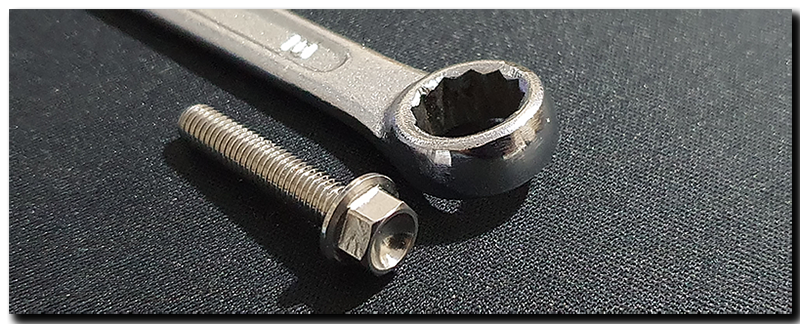
Ultimately I invested in a few little upgrades … the fork axle pinch bolts went from home-drilled cap-head to lovely ‘race spec’ (drilled for lock wiring!) flange bolts and the brake/clutch master cylinder cap heads were replaced for the the none-drilled versions. Last but not least, the rear axle adjuster bolts have been upgraded to stainless steel versions.
Conclusion
After putting a fair amount and time and effort into brake lines and calipers etc. it only seemed logical to add the finishing touches by upgrading certain fasteners to ones similar (but better!) to those fitted by the manufacturer. It’s not a cheap exercise by any stretch, but it does remind me of the old saying;
Don’t spoil the ship for a ha’p’orth of tar
SPOILER ALERT – It doesn’t have anything to do with ships! Ship was dialect for sheep. The meaning is, don’t lose a good sheep by not putting a protective layer of tar on wounds or sores to prevent infection by flies etc. Over the years folk have taken ‘ship’ literally and besides, it sounds far more grandiose to think that a cheap amount of tar could cause the loss of a very expensive ship! Here endeth the lesson … 🙂
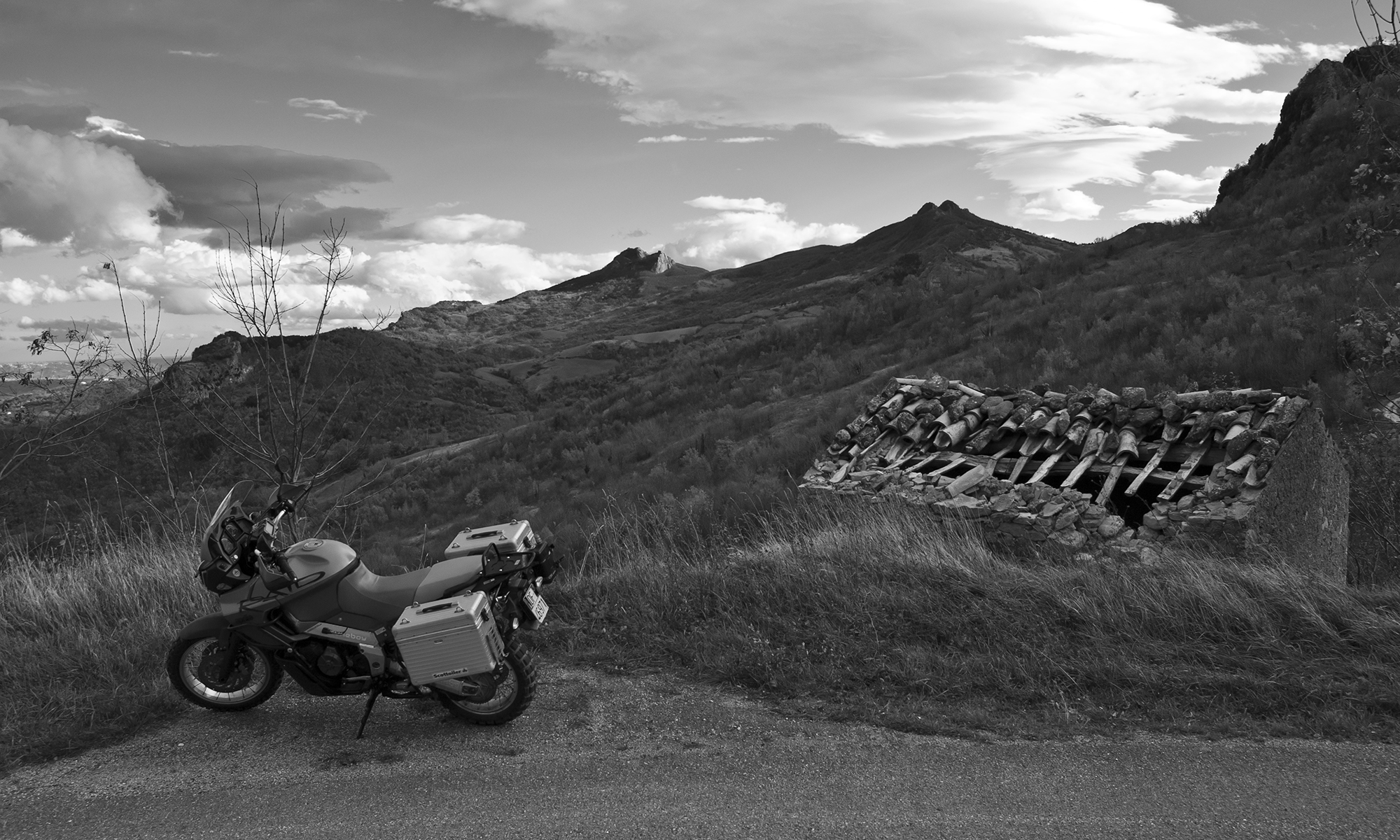





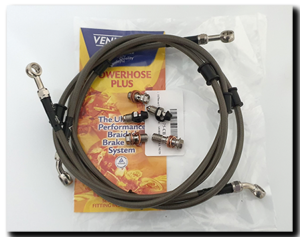 Well this little job just got a whole lot more involved and costly! The idea of having lovely clean and refreshed calipers made me think about the old banjo bolts (M10x1) and bleed screws (M8x1.25) … OK, so new stainless ones were ordered from
Well this little job just got a whole lot more involved and costly! The idea of having lovely clean and refreshed calipers made me think about the old banjo bolts (M10x1) and bleed screws (M8x1.25) … OK, so new stainless ones were ordered from 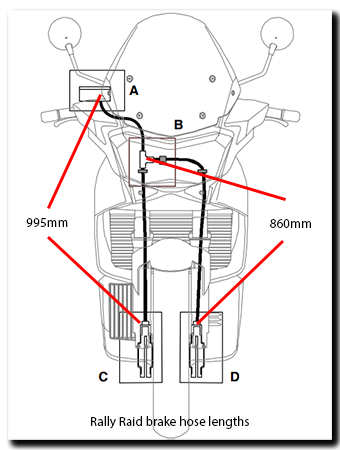 The standard hose assembly is a single hose from the reservoir to a T-piece just below the lower fork clamp, from there a single hose down to each caliper. To replicate this was actually more expensive than using two individual lines from the brake master cylinder. So that’s what I went with –
The standard hose assembly is a single hose from the reservoir to a T-piece just below the lower fork clamp, from there a single hose down to each caliper. To replicate this was actually more expensive than using two individual lines from the brake master cylinder. So that’s what I went with – 










 I posted about this thing in 2012 and planned for it’s replacement in 2013.
I posted about this thing in 2012 and planned for it’s replacement in 2013.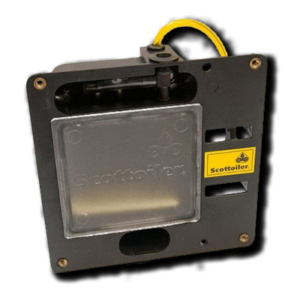 nothing’ mode and ‘all’ really was quite a bit of oil to go sloshing around the back wheel! The RMV (Reservoir Metering Valve) had been refurbished back around 2013-14 and back then, the diaphragm was already getting a little stiff. I guess like my old joints, one day it just stopped flexing at all.
nothing’ mode and ‘all’ really was quite a bit of oil to go sloshing around the back wheel! The RMV (Reservoir Metering Valve) had been refurbished back around 2013-14 and back then, the diaphragm was already getting a little stiff. I guess like my old joints, one day it just stopped flexing at all.











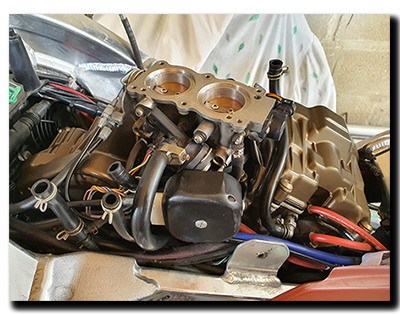








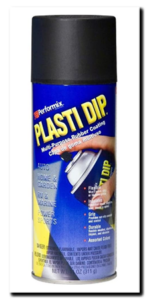




 Next on the list …. another little update to the
Next on the list …. another little update to the 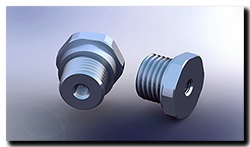 As Guinness said, “Good things come to those who wait” …… and boy have I waited! When the new grips went on in late November, they were accompanied by the 3D printed temporary bar-end mounts. The clock was ticking, I had to get the grown-up adult versions (stainless steel!) made up asap as I’d no idea how long these things would hold up. In early January someone stepped in to do the deed.
As Guinness said, “Good things come to those who wait” …… and boy have I waited! When the new grips went on in late November, they were accompanied by the 3D printed temporary bar-end mounts. The clock was ticking, I had to get the grown-up adult versions (stainless steel!) made up asap as I’d no idea how long these things would hold up. In early January someone stepped in to do the deed.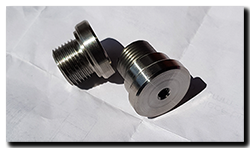 So just when I was giving up on ever seeing a set, a mate offered to help, and in the blink of an eye made these beauties! They fit perfectly and the finish is brilliant – what more can I ask for? So a huge ‘Thank you’ goes out to Jason – stand up, take a bow, don’t be shy fella! The eagle-eyed will notice a change from the rendering (and drawing) in that the flats (for socket or spanner) were left off. This was to reduce machining time and also because they only really need to pinch up – I’m not torquing the nuts off an axle here!
So just when I was giving up on ever seeing a set, a mate offered to help, and in the blink of an eye made these beauties! They fit perfectly and the finish is brilliant – what more can I ask for? So a huge ‘Thank you’ goes out to Jason – stand up, take a bow, don’t be shy fella! The eagle-eyed will notice a change from the rendering (and drawing) in that the flats (for socket or spanner) were left off. This was to reduce machining time and also because they only really need to pinch up – I’m not torquing the nuts off an axle here!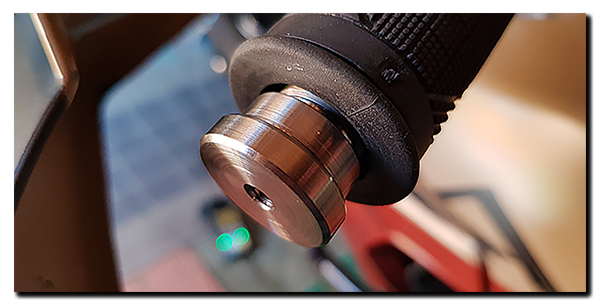
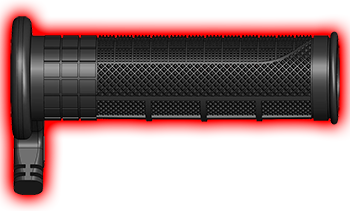 After a couple of rides, here’s the verdict on the
After a couple of rides, here’s the verdict on the 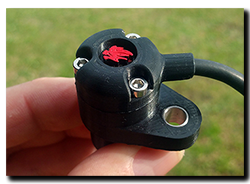
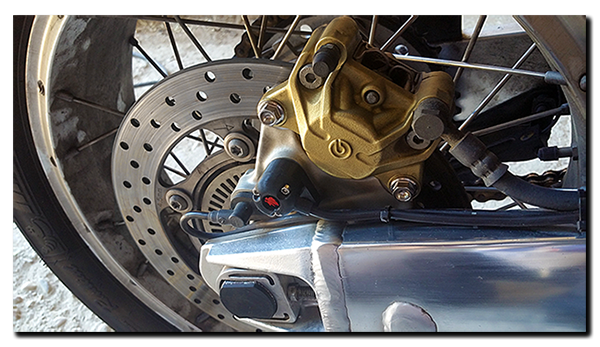
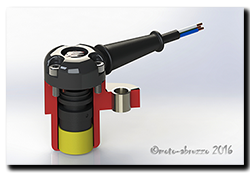
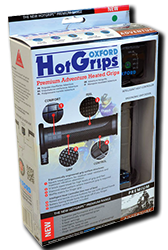 I figured it would be a good time to take the Capo off the road and replace the heated grips when it next rained …… and oh boy is it raining! 48Hrs now and another 24 to go if the met folk are to be believed. Plenty of time then to get the deed done, with a hot brew and cold beer somewhere along the way.
I figured it would be a good time to take the Capo off the road and replace the heated grips when it next rained …… and oh boy is it raining! 48Hrs now and another 24 to go if the met folk are to be believed. Plenty of time then to get the deed done, with a hot brew and cold beer somewhere along the way.